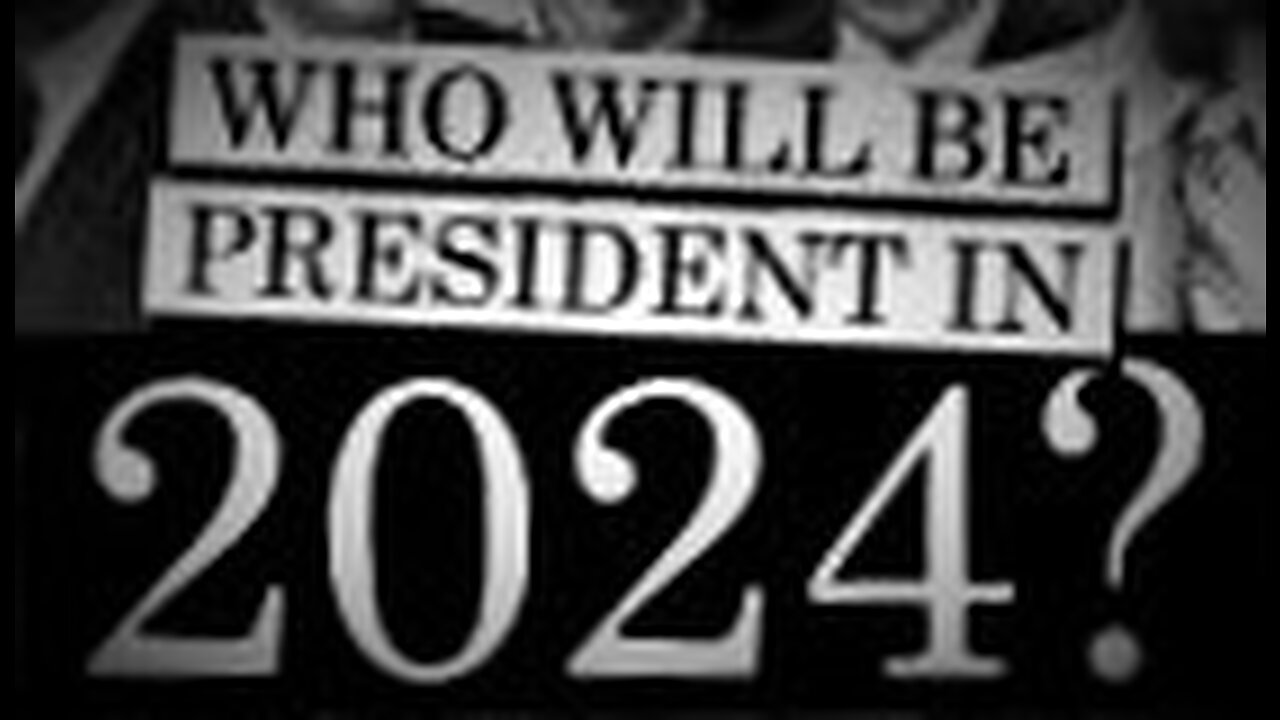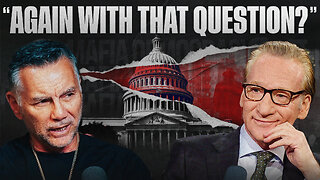Premium Only Content

US presidential election 2024 (facts)
In the early days the process for electing a U.S. President was a controversial topic, some suggested that Congress should choose the President. Others argued that it should be a democratic vote by the people.
The "compromise" was the Electoral College, which has been in effect ever since.
The Electoral College is composed of electors who each cast one electoral vote following the voting that takes place in the general election.
Each state gets a certain number of electors based on its total number of representatives in Congress, which reflects population numbers for that state.
There is a total of 538 electoral votes and the candidate must win the majority of the electoral votes to win the election. Therefore, the candidate who gets more than half (270 electoral votes) wins the Presidential election.
Based on the Electoral College, Presidential campaigns prioritize victories in states that will total more than 270 electoral votes, rather than trying to win the most actual direct votes nationwide. The key reason for this strategy is that in every state, except Nebraska and Maine, the candidate who wins the most votes in a state also wins all the electors from that state, regardless of the margin of victory.
This winner-take-all electoral system makes it possible for one candidate to get more votes nationwide, but a different candidate to win in the Electoral College and ultimately, win the Presidency.
Many believe that the origins of the Electoral College are more complex. One theory is that its roots are in slavery. If there had been no Electoral College, the South would have lost every Presidential election because a large percentage of the Southern population were enslaved people who could not vote. Instead, eight of the first nine Presidential races were won by a Virginian based on electoral votes.
Another common theory about the justification for the Electoral College is that it prevented Presidential candidates from ignoring the smaller, less populated states while running for election.
If the outcome was just based on the popular vote, candidates could focus primarily on high-population states and urban centers and mostly ignore smaller states and more rural areas of the country.
There have been five times in U.S. history when the candidate who won the Electoral College (and ultimately won the election) did not get the most popular votes.
It happened in 1824, 1876, 1888 and in the last two out of five Presidential elections (in 2000 won by George W. Bush and 2016 won by Donald Trump), when the Presidential election was determined by the Electoral College, not the popular vote.
Critics of the Electoral College believe that it compromises the “one person, one vote” principle and it is less democratic than a popular vote. Not only can someone win the presidency without winning the popular vote, another consequence is that it influences how and where candidates campaign.
Under the current system, if it seems clear that one candidate is likely to win a particular state, there is no reason for the other candidate to campaign in that state and try to capture any votes.
As a result, rather than visiting as many states as they can, candidates end up focusing their time and resources on a small number of “swing states.” (Swing states are states that can reasonably be won by either the Democratic or Republican Presidential candidate and these states are often targeted for campaigning by both parties.)
This practice contradicts the idea that Presidential candidates should share their platform and seek as many votes as possible in every state across the whole country.
States’ election and voting policies
Individual states have the responsibility of overseeing federal elections and make decisions about their state’s election and voting laws and policies. Each state has the power to adopt and implement critical policies that expand or restrict voting. These policies include voter accessibility laws like early voting, mail-in voting, same-day registration voting, and voter ID laws. This means that the state you live in plays an important role in determining your ability to vote and how much your vote matters.
In a 2020 Pew Research study, more than half of U.S. adults (58%) expressed the opinion that the Constitution should be amended so that the Presidential candidate who wins the popular vote (i.e., receives the most votes nationwide) should win the election.
Women and young adults are more likely to support amending the Constitution to end the Electoral College.
There are also differences in political affiliation among the people who support or want to eliminate the Electoral College. In 2011, about half of Republicans and Republican-leaning independents (51%) said the Constitution should be amended to eliminate the Electoral College.
In 2020, nearly two-thirds of Republicans reported wanting to keep the current system.
Age 10 and up
Questions to Start the Conversation
How important do you think it is to vote in elections? Please explain.
What did you learn about the Electoral College that you didn’t know before?
What is surprising?
Did you previously have an opinion about the Electoral College and if so, has it changed?
What questions do you still have about the Electoral College?
What are the best arguments for and against the Electoral College today?
Do you think the Electoral College is fair and equitable?
Why or why not?
Do you think the Electoral College should be kept, ended or modified in some way?
Please explain.
If you think the Electoral College should change in some way, what do you think is the best way persuade others and amplify your opinion?
Take Action
Ask: What can we do to help? What actions might make a difference?
Help to organize a forum (in-person or virtual) at school to discuss elections, voting and the Electoral College. Invite speakers with different points of view who can share their thoughts and insights about their perspectives.
Learn more about the voting and election laws in your state. Depending on your opinions about those laws, share your point of view in school, in your community and on social media.
Reach out to your members of Congress to share your ideas and opinions about the Electoral College and elections in general.
The US electoral college was established by the US Constitution as the body which directly elects the US President and Vice President.
When individual citizens cast their votes in US presidential elections, they aren’t actually electing the President themselves, but rather they’re voting for a candidate indirectly through the electoral college.
The Electors
The electoral college is made up of “electors” who are elected on a state-by-state basis. Each US state is allocated a certain number of electors in correlation with its population (equal to its total number of Congressional seats). The more populous the state, the greater the number of electors it receives. California, with its near 40 million inhabitants, receives the largest number of electors - 55 (equal to California’s 53 House of Reps seats + its 2 Senate seats). At the other end of the scale, the District of Columbia and a handful of small states only receive 3 electors.
The Electoral System
Electors in each state are chosen at US presidential elections using a “winner-takes-all” plurality system, also known as first past the post. This means that the party’s candidate who receives the highest number of votes in a particular state will win all electors in that state. Hence the “winner-takes-all” description. Maine and Nebraska are exceptions as they use a proportional system, where electors are distributed according to the popular vote in the state. Once chosen, the electors “pledge” to vote for either the Republican or the Democratic candidate, depending on which way their state voted. Whilst there is no federal law which binds electors to honor their pledge, there have been very few occasions when electors haven't done so (known as “faithless electors”), and they’ve never once affected the outcome of the election.
With the total number of electors being 538, successful presidential candidates require at least 270 electoral college seats to win the White House. Voting within the electoral college will then take place in the weeks following election day, despite the result being known in advance on election night. Electors cast one vote for the President and one for the Vice President.
In 2016, Republican candidate Donald Trump won the electoral college with 306 electors to defeated Democrat candidate Hillary Clinton’s 232.
The United States Electoral College is the group of presidential electors required by the Constitution to form every four years for the sole purpose of appointing the president and vice president.
Each state and the District of Columbia appoints electors pursuant to the methods described by its legislature, equal in number to its congressional delegation (representatives and senators). Federal office holders, including senators and representatives, cannot be electors. Of the current 538 electors, an absolute majority of 270 or more electoral votes is required to elect the president and vice president.
If no candidate achieves an absolute majority there, a contingent election is held by the House of Representatives to elect the president and by the Senate to elect the vice president.
The states and the District of Columbia hold a statewide or districtwide popular vote on Election Day in November to choose electors based upon how they have pledged to vote for president and vice president, with some state laws proscribing faithless electors. All states except Maine and Nebraska use a party block voting, or general ticket method, to choose their electors, meaning all their electors go to one winning ticket. Maine and Nebraska choose one elector per congressional district and two electors for the ticket with the highest statewide vote. The electors meet and vote in December, and the inauguration of the president and vice president takes place in January.
The suitability of the Electoral College system is a matter of ongoing debate. Supporters argue that it requires presidential candidates to have broad appeal across the country in order to win, while critics argue that it is not representative of the popular will of the nation when viewed without regard to the states.
Its implementation by the states may leave it open to criticism; winner-take-all systems, especially in populous states, may not align with the principle of "one person, one vote". Almost 10% of presidential elections under the system have not elected the winners of the nationwide popular vote.
Critics argue that the Electoral College system is less democratic than a direct popular vote and that the college violates the democratic principle of "one person, one vote." Thus, a president who did not win the national popular vote may get elected, as occurred in 1824, 1876, 1888, 2000, and 2016. Critics object to the inequity that due to the distribution of electors, individual citizens in states with smaller populations have proportionately more voting power than those in larger states. This is because the number of electors each state appoints is equal to the size of its congressional delegation, each state is entitled to at least three regardless of population, and the apportionment of the statutorily fixed number of the rest is only roughly proportional. In addition, faithless electors may not vote in accord with their pledge.
Further objection is that instead of spending equally on each voter in the nation, candidates focus their campaigns on just a few swing states.
-
 LIVE
LIVE
sophiesnazz
8 hours ago $0.91 earnedGENUINE BELTERS IN ERE l LIVE WITH @SpartakusLIVE!socials
95 watching -
 1:15:18
1:15:18
Glenn Greenwald
6 hours agoTrump Promises More Weapons for Ukraine; Trump Again Accuses Dems of Fabricating Epstein Files | SYSTEM UPDATE #487
107K73 -
 LIVE
LIVE
This is the Ray Gaming
1 hour agoTuesday Night is FOR THE BOYS | Rumble Premium Creator
74 watching -
 LIVE
LIVE
RaikenNight
2 hours agoDon't know what to play so I am doing a hangout stream
30 watching -
 2:14:46
2:14:46
RiftTV
7 hours agoTrump TRIPLES Down on Epstein COVER-UP.. MAGA Base ERUPTS | The Rift | Sarah Stock & Anna Perez
50.1K13 -
 6:53:23
6:53:23
EyeSeeU8
7 hours agoWarzone Solos Is The Way
44 -
 34:10
34:10
Michael Franzese
8 hours agoBill Maher vs. Michael Franzese: This Got Heated
65.8K29 -
 LIVE
LIVE
SlingerGames
1 hour agoDelta Force with BSparks | Creator for @SELFMADEGGS
12 watching -
 1:54:33
1:54:33
megimu32
3 hours agoOTS: When TV Was Sacred - Nick at Nite & SNICK Nostalgia Night!
21.3K9 -
 LIVE
LIVE
AlphaZeroOmega
3 hours ago $0.03 earnedDune Awakening: 🏜 We have a fresh Deep Desert to explore! 🏜 | 🚨Rumble Studio Direct RTMP🚨
119 watching